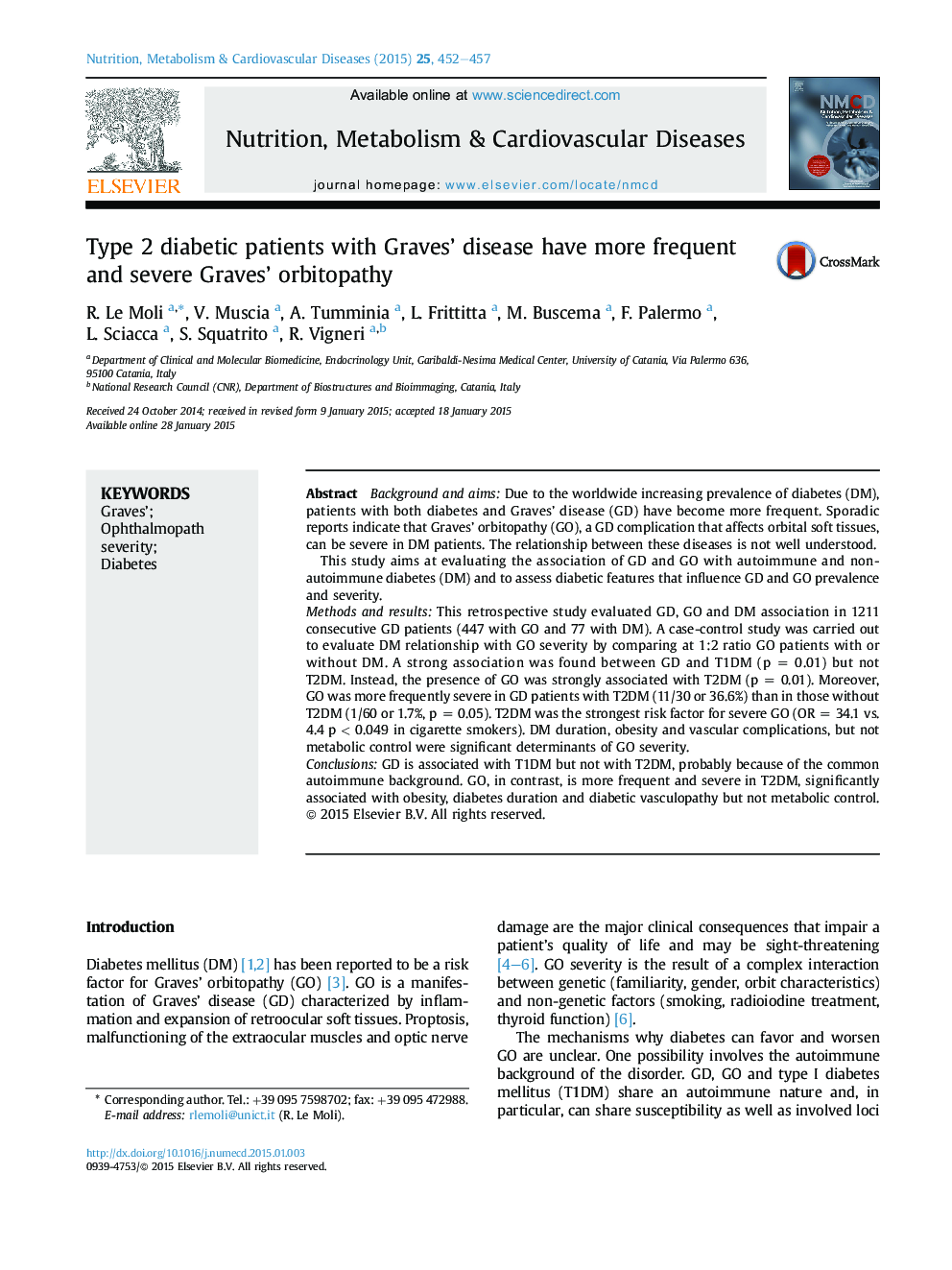| Article ID | Journal | Published Year | Pages | File Type |
|---|---|---|---|---|
| 3001812 | Nutrition, Metabolism and Cardiovascular Diseases | 2015 | 6 Pages |
•The relationship between type 1 and type 2 diabetes, Graves' disease (GD) and Graves' orbitopathy (GO) is focused.•Type 1 diabetes (T1DM) and GD are significantly associated on the basis of the shared autoimmune background.•Type 2 diabetes (T2DM) is significantly associated with increased prevalence and severity of GO.•Overweight, diabetic angiopaty and diabetes duration, but not metabolic control, are major risk factors for GO severity in T2DM.
Background and aimsDue to the worldwide increasing prevalence of diabetes (DM), patients with both diabetes and Graves' disease (GD) have become more frequent. Sporadic reports indicate that Graves' orbitopathy (GO), a GD complication that affects orbital soft tissues, can be severe in DM patients. The relationship between these diseases is not well understood.This study aims at evaluating the association of GD and GO with autoimmune and non-autoimmune diabetes (DM) and to assess diabetic features that influence GD and GO prevalence and severity.Methods and resultsThis retrospective study evaluated GD, GO and DM association in 1211 consecutive GD patients (447 with GO and 77 with DM). A case-control study was carried out to evaluate DM relationship with GO severity by comparing at 1:2 ratio GO patients with or without DM. A strong association was found between GD and T1DM (p = 0.01) but not T2DM. Instead, the presence of GO was strongly associated with T2DM (p = 0.01). Moreover, GO was more frequently severe in GD patients with T2DM (11/30 or 36.6%) than in those without T2DM (1/60 or 1.7%, p = 0.05). T2DM was the strongest risk factor for severe GO (OR = 34.1 vs. 4.4 p < 0.049 in cigarette smokers). DM duration, obesity and vascular complications, but not metabolic control were significant determinants of GO severity.ConclusionsGD is associated with T1DM but not with T2DM, probably because of the common autoimmune background. GO, in contrast, is more frequent and severe in T2DM, significantly associated with obesity, diabetes duration and diabetic vasculopathy but not metabolic control.
